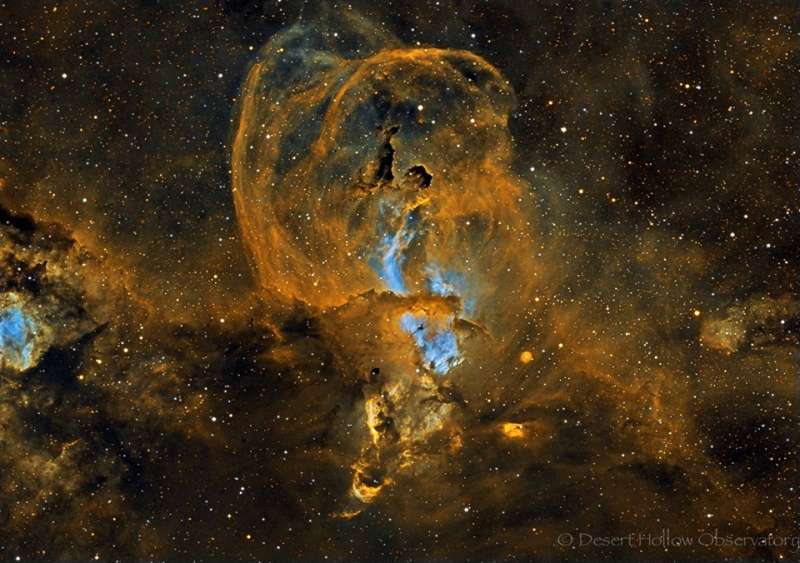
|
Credit & Copyright: Desert Hollow Observatory
Explanation:
What's happening in the NGC 3582 nebula?
Bright stars and interesting molecules are forming.
The
complex
nebula resides in the star forming region called RCW 57.
Visible in this
image are dense knots of dark interstellar dust,
bright stars that have formed in the past few million years, fields of glowing
hydrogen gas
ionized by these stars, and
great loops of gas expelled by dying stars.
A detailed study of NGC 3582, also known as
NGC 3584 and
NGC 3576,
uncovered at least 33 massive stars in the end stages of formation,
and the clear presence of the complex carbon molecules known as
polycyclic aromatic hydrocarbons (PAHs).
PAHs are thought to be created in the cooling gas of
star forming regions,
and their development in the
Sun's formation nebula five billion years
ago may have been an important step in the
development
of life on Earth.
The
above image was taken at the Desert Hollow Observatory north of
Phoenix,
Arizona,
USA.
Follow APOD on:
Facebook
(Daily)
(Sky)
(Spanish)
or Google Plus
(Daily)
(River)
|
January February March April May June July August September October November December |
| ||||||||||||||||||||||||||||||||||||||||||||||||
NASA Web Site Statements, Warnings, and Disclaimers
NASA Official: Jay Norris. Specific rights apply.
A service of: LHEA at NASA / GSFC
& Michigan Tech. U.
Based on Astronomy Picture
Of the Day
Publications with keywords: nebula - star formation
Publications with words: nebula - star formation
See also:
- APOD: 2025 December 9 B The Heart of the Soul Nebula
- APOD: 2025 July 10 B Lynds Dark Nebula 1251
- APOD: 2025 June 23 B W5: Pillars of Star Formation
- APOD: 2025 April 28 B Gum 37 and the Southern Tadpoles
- APOD: 2025 March 26 B Star Formation in the Pacman Nebula
- APOD: 2025 March 18 B LDN 1235: The Shark Nebula
- APOD: 2024 October 22 B M16: Pillars of Star Creation
